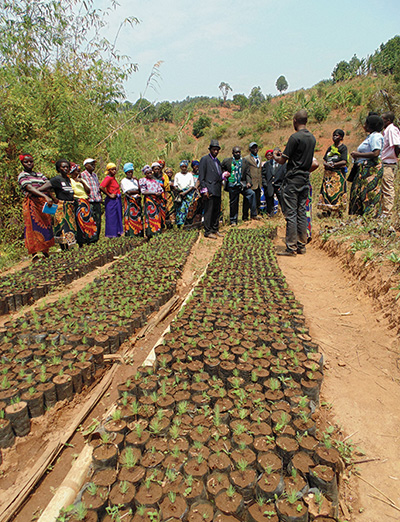Message from Roberto Ridolfi, European Commission
As the countries of the United Nations strive to meet their commitment to end extreme poverty by 2030, one strategy must be to invest more in nature. Vibrant, biologically diverse natural ecosystems provide a foundation for human well-being, stable communities and sustainable economic development, making them an essential part of the solution. Nature provides vital resources such as fresh air, fertile soil, pollinators, food and the regular flow of clean, fresh water. Reverence for, and traditions based on, nature are often part of the cultural fabric that weaves communities together. Climate change experts also indicate that protection and restoration of tropical forests could make up 30 percent of the greenhouse gas emission reductions necessary to avoid climate disaster that will disproportionately impact the poor. Forests, wetlands and coastal zones are cost-effective solutions to mitigate the potentially devastating effects of climate change and extreme weather.
That is a primary reason why the European Union joined the CEPF donor partnership in 2012. CEPF supports civil society organizations in developing and transitional countries to conserve biodiversity and ecosystems while strengthening local communities’ ability to manage their environments, influence development decision-making, and build a future that will allow them to thrive. Simultaneously, CEPF strengthens the ability of local organizations to emerge as trusted partners of government and the private sector.

With a relatively modest investment of more than US$206 million over 15 years, CEPF is making a difference. The fund strategically directs its financial and technical support to key civil society actors in the world’s biodiversity hotspots—some of Earth’s most biologically rich yet threatened areas that are also home to millions of impoverished people. Indications of CEPF’s impact include:
- Contribution to the establishment of 14.5 million hectares of protected area (similar to the size of Bangladesh) and strengthened management of 41.7 million hectares of Key Biodiversity.
- Areas (larger than the size of Germany), securing vital watersheds and forest cover.
- Strengthened management of 6.4 million hectares of production landscapes—ecosystems that support agriculture, forestry or development of natural products.
- Training of 67,000 men and women in sustainable livelihoods, environmental education, financial management and/or leadership.
- Socioeconomic benefits for more than 2,600 communities, such as improved access to water and improved food security.
- Increased income for more than 33,800 people during fiscal years 2015 and 2016.
The EU is proud to have contributed, along with other donors, to these important results for ecosystems and people.
These encouraging results need to be pursued and sustained in order to achieve the U.N. Aichi targets and Agenda 2030 objectives. Scaling up investments would thus be required. Examples of innovative financial instruments exist, such as the EU External Investment Plan, which aims at leveraging public funds by mobilizing private investment in sectors such as natural resources, agriculture and renewable energy. With poverty reduction and biodiversity conservation as guiding threads, we invite others who share our commitment to join the CEPF partnership and collectively build the foundation for a poverty-free future.
– Roberto Ridolfi, director, Sustainable Growth and Development, Directorate General for International Cooperation and Development – DEVCO, European Commission
Photo Credits
Roberto Ridolfi. © European Commission.
Misuku Hills Biodiversity Conservation program, Malawi. © BirdLife International/photo by
Albert Schenk


